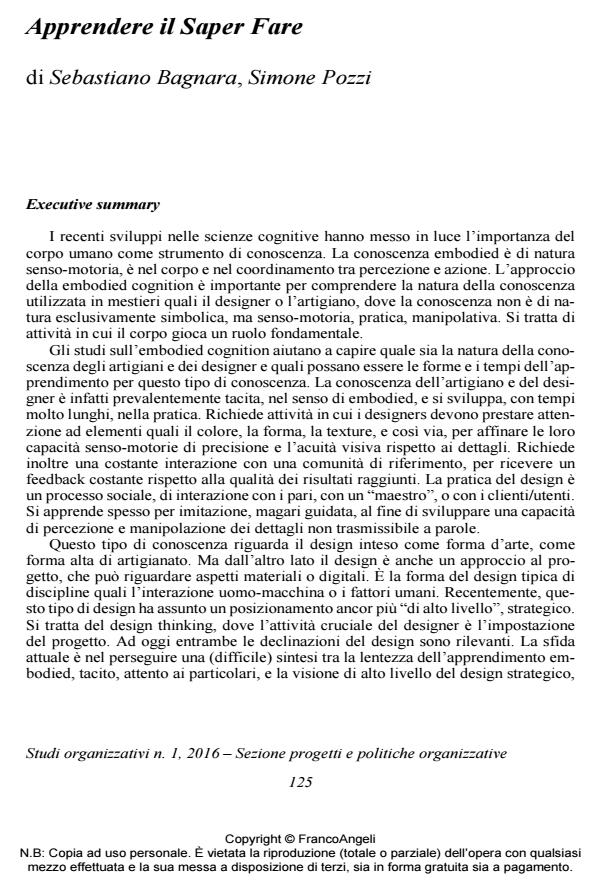Apprendere il Saper Fare
Journal title STUDI ORGANIZZATIVI
Author/s Sebastiano Bagnara, Simone Pozzi
Publishing Year 2016 Issue 2016/1
Language Italian Pages 14 P. 125-138 File size 164 KB
DOI 10.3280/SO2016-001006
DOI is like a bar code for intellectual property: to have more infomation
click here
Below, you can see the article first page
If you want to buy this article in PDF format, you can do it, following the instructions to buy download credits

FrancoAngeli is member of Publishers International Linking Association, Inc (PILA), a not-for-profit association which run the CrossRef service enabling links to and from online scholarly content.
In this paper "Learning How to Design: the Role of Embodied Cognition" we present the contribution of embodied cognition to design. The embodied cognition approach seeks to understand the role played by our body in cognition, showing the ways in which body characteristics affect cognitive activities. This approach brings important insights about the nature of craftsmen and designers’ knowledge, which is of a sensory-motor nature, related to practical actions. To learn and to master this type of knowledge, designers need to engage in practical activities, characterised by long and slow learning processes. Designers need to pay attention to elements like colours, shape, texture, and other minute details. They need to develop capabilities to work on these details, improving their perception skills. This practice has a social dimension, too. It requires constant interaction and feedback from the designers’ community, or from customers. This form of knowledge is typical of the conception of "design as craft". However, nowadays design is also "strategic design", "design thinking", where design is primarily seen as the activity of shaping a project, tracing its scope and boundaries. One of the hardest challenges of the design discipline today is keeping in balance these two conceptions: the slow pace of craft with the long-term vision of strategic design, the attention to details with the strategic overview.
Keywords: Organization, design, embodied cognition, design thinking, interaction design, craftsmanship.
Sebastiano Bagnara, Simone Pozzi, Apprendere il Saper Fare in "STUDI ORGANIZZATIVI " 1/2016, pp 125-138, DOI: 10.3280/SO2016-001006